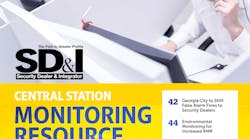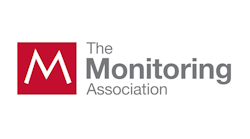Back at ESX 2017 in Nashville, members of The Monitoring Association (TMA) elected Ivan Spector, president of Montreal-based Sentinel Alarm Co., to serve as its next president. He officially took over the role from Vector Security’s Pamela Petrow at the conclusion of the TMA Annual Meeting in Scottsdale, Ariz., on Oct. 11. In addition to his role at Sentinel Alarm, Spector has been an advocate for the alarm industry in both Canada – for the Canadian Security Association (CANASA) – and the United States, as a founding member and longtime board member of the Security Industry Alarm Coalition (SIAC).
SD&I caught up with Spector for a quick interview on his new role with TMA:
SD&I: What are your overall goals when it comes to guiding the association through the next two years?
Spector: We will continue to provide value to our members through education, best practices and opportunities for continued growth. Our outreach to the Law Enforcement and Life Safety community is extremely important. Our education programs are another cornerstone of who we are and what we do for the industry, and ASAP to PSAP is gaining tremendous traction and we will continue to press for its adoption throughout the United States and Canada.
How has the industry accepted the name change (to TMA from CSAA), and what work still needs to be done to raise awareness?
Industry acceptance for the new name and new brand has been very well received. With our expanded membership categories, we have broadened our appeal through the industry. We also need to continue making inroads to those areas that we want to invite into TMA. Our main focus has always been on the security industry and consistent with the name change we need to realign our outreach to be more encompassing.
How has the updated focus on different types of monitoring (beyond alarms, such as environmental and network monitoring) changed the mission/perception of the association?
Many in the traditional monitoring business have long provided critical condition monitoring for areas outside of our core businesses, whether environmental monitoring, man down systems, guard tour monitoring, generators and other operational critical devices. Certainly there are more opportunities in network monitoring, healthcare, cybersecurity and others. Our Board of Directors, membership and staff have done an excellent job in embracing our new mission and pushing that agenda forward.
How will this focus on different monitoring offerings impact the five diamond designation/program now and in the future?
We have a very dedicated and involved group of volunteers on our Five Diamond Committee that are reviewing the program to ensure it provides the necessary and relevant content to an expanded member base.
What are your goals for continuing education and training initiatives spearheaded by TMA?
Our Five Diamond Program continues to be the industry standard; we have our very successful Fall Operations Management Seminar in Chicago in November; and we have an array of top-level training and education programs available at ESX.
With so many security monitoring providers, does TMA have any specific programs to help alarm dealers navigate the central station selection process?
Trade publications such as yours do an excellent job highlighting the changes to our industry, and certainly third-party monitoring has been one of those changes. There are many moving parts to look for when choosing a monitoring provider, and certainly TMA membership and Five Diamond Certification demonstrates that the monitoring company is dedicated to training and learning. In our more complex industry, many smaller companies are looking at different ways on how they can improve their bottom line and the customer experience, and for some, that may mean running a monitoring station.
Paul Rothman is Editor in Chief of Security Dealer & Integrator (SD&I) magazine. Access the current issue, archives and subscribe at www.secdealer.com.






